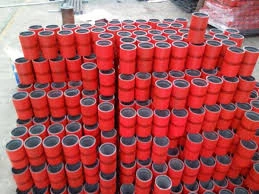- Afrikaans
- Albanian
- Amharic
- Arabic
- Armenian
- Azerbaijani
- Basque
- Belarusian
- Bengali
- Bosnian
- Bulgarian
- Catalan
- Cebuano
- Corsican
- Croatian
- Czech
- Danish
- Dutch
- English
- Esperanto
- Estonian
- Finnish
- French
- Frisian
- Galician
- Georgian
- German
- Greek
- Gujarati
- Haitian Creole
- hausa
- hawaiian
- Hebrew
- Hindi
- Miao
- Hungarian
- Icelandic
- igbo
- Indonesian
- irish
- Italian
- Japanese
- Javanese
- Kannada
- kazakh
- Khmer
- Rwandese
- Korean
- Kurdish
- Kyrgyz
- Lao
- Latin
- Latvian
- Lithuanian
- Luxembourgish
- Macedonian
- Malgashi
- Malay
- Malayalam
- Maltese
- Maori
- Marathi
- Mongolian
- Myanmar
- Nepali
- Norwegian
- Norwegian
- Occitan
- Pashto
- Persian
- Polish
- Portuguese
- Punjabi
- Romanian
- Russian
- Samoan
- Scottish Gaelic
- Serbian
- Sesotho
- Shona
- Sindhi
- Sinhala
- Slovak
- Slovenian
- Somali
- Spanish
- Sundanese
- Swahili
- Swedish
- Tagalog
- Tajik
- Tamil
- Tatar
- Telugu
- Thai
- Turkish
- Turkmen
- Ukrainian
- Urdu
- Uighur
- Uzbek
- Vietnamese
- Welsh
- Bantu
- Yiddish
- Yoruba
- Zulu
bull plug vs hex plug
Bull Plug vs. Hex Plug Understanding the Differences and Applications
When it comes to the ever-evolving world of piping and fittings, understanding the nuances of various components is crucial. Two types of plugs frequently encountered in industrial applications are the bull plug and the hex plug. Though both serve the fundamental purpose of sealing or closing a pipe or conduit, they come with distinct characteristics, advantages, and preferred usage scenarios. This article aims to elucidate the differences between bull plugs and hex plugs, helping professionals make informed decisions in their plumbing or industrial projects.
What is a Bull Plug?
A bull plug, often referred to as a pipe plug, is characterized by its rounded top and tapered threads. The design allows for easy insertion into a pipe or fitting, offering a tight seal that prevents the escape of fluids or gases. Bull plugs are primarily made of metals, such as brass or stainless steel, or durable plastics, catering to various environmental conditions. They are commonly used in applications requiring a reliable closure for pipes in construction, mechanical engineering, and HVAC systems.
What is a Hex Plug?
On the other hand, a hex plug features a hexagonal head that allows for easy manipulation using standard wrenches. This design is particularly advantageous in situations where space is restricted, as it provides better leverage than a rounded plug. Hex plugs are also utilized mainly in industrial and plumbing applications, often crafted from similar materials as bull plugs. Their straightforward design makes them suitable for quick installations and maintenance tasks, especially when needing access for repairs or modifications.
Key Differences
One of the most apparent differences between bull plugs and hex plugs is their shape and design. While bull plugs have a rounded top and tapered threads for a seamless fit, hex plugs come with a distinctly hexagonal shape that facilitates the use of tools. This fundamental difference influences their ease of use in various situations
bull plug vs hex plug

1. Installation and Removal Bull plugs typically require a tighter fit to ensure sealing, which can sometimes complicate installation and removal. Hex plugs, with their hexagonal heads, enable easier installation and detachment without risking damage to the fitting. This is particularly critical in environments where regular maintenance is necessary.
2. Sealing Capability Bull plugs are often regarded as superior in sealing ability due to their tapered design, which provides a more effective barrier against leaks. This makes them ideal for high-pressure applications where leaks can pose considerable risks. Conversely, while hex plugs can offer a decent seal, they may not always match the performance of bull plugs in extreme conditions.
3. Space Considerations In situations where space is at a premium, hex plugs have the upper hand. Their flat sides allow for the use of various tools, making them more accessible than bull plugs that may require more clearance for adequate manipulation.
Applications
Choosing between a bull plug and a hex plug ultimately depends on the specific requirements of a project. Bull plugs are ideal in situations where a robust seal is crucial, such as in steam systems or hydraulic applications. However, if easy access and frequent maintenance are priorities, opting for hex plugs may be more practical.
Conclusion
Both bull plugs and hex plugs hold significant importance in plumbing and industrial frameworks. Their unique designs cater to different needs, whether it be sealing capability or ease of maintenance. Understanding these differences equips professionals with the knowledge needed to select the appropriate plug for their applications. By assessing the specific requirements of a task, individuals can optimize efficiency and reliability in their piping systems.
-
Tubing Pup Joints: Essential Components for Oil and Gas OperationsNewsJul.10,2025
-
Pup Joints: Essential Components for Reliable Drilling OperationsNewsJul.10,2025
-
Pipe Couplings: Connecting Your World EfficientlyNewsJul.10,2025
-
Mastering Oilfield Operations with Quality Tubing and CasingNewsJul.10,2025
-
High-Quality Casing Couplings for Every NeedNewsJul.10,2025
-
Boost Your Drilling Efficiency with Premium Crossover Tools & Seating NipplesNewsJul.10,2025







